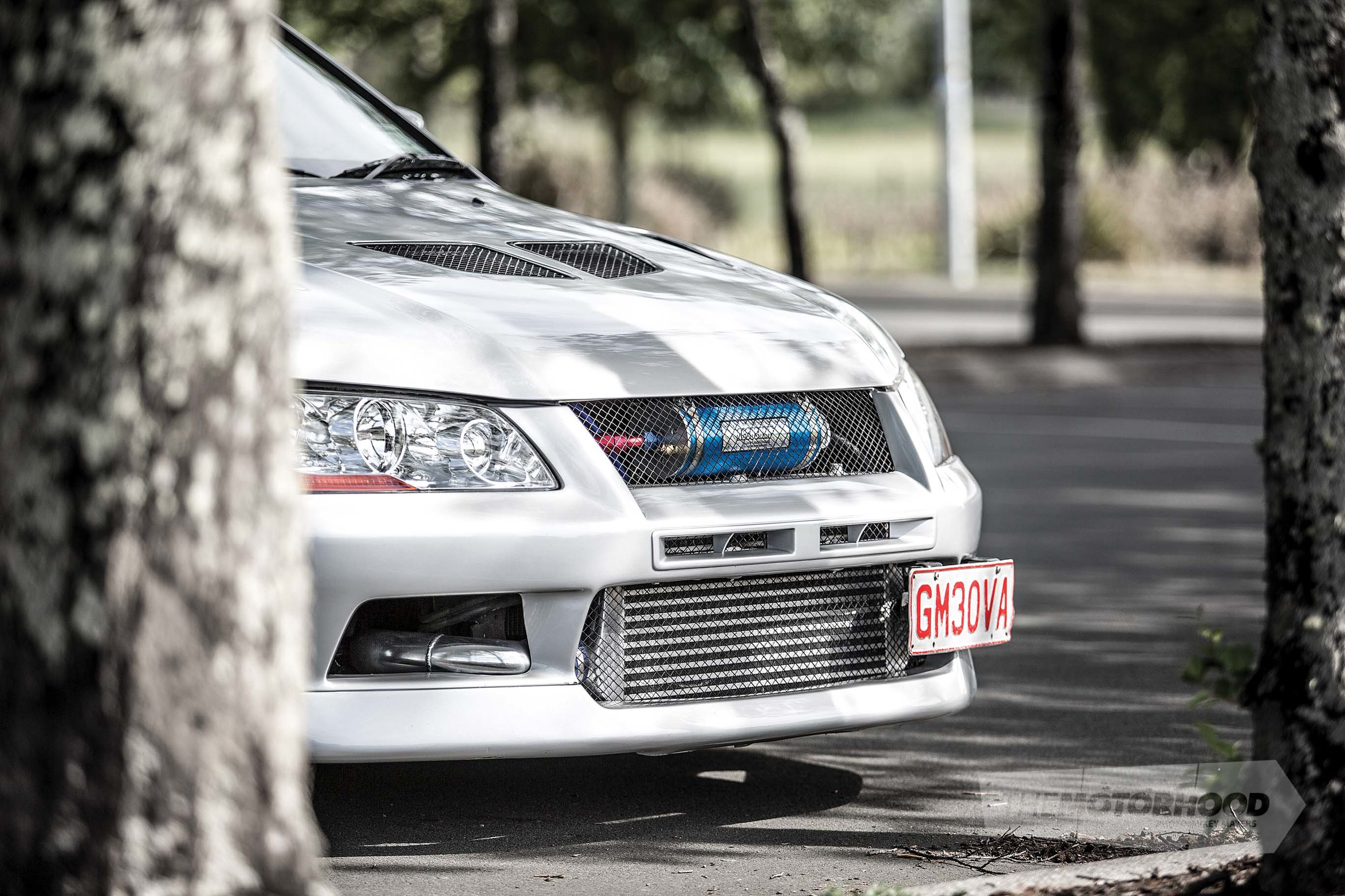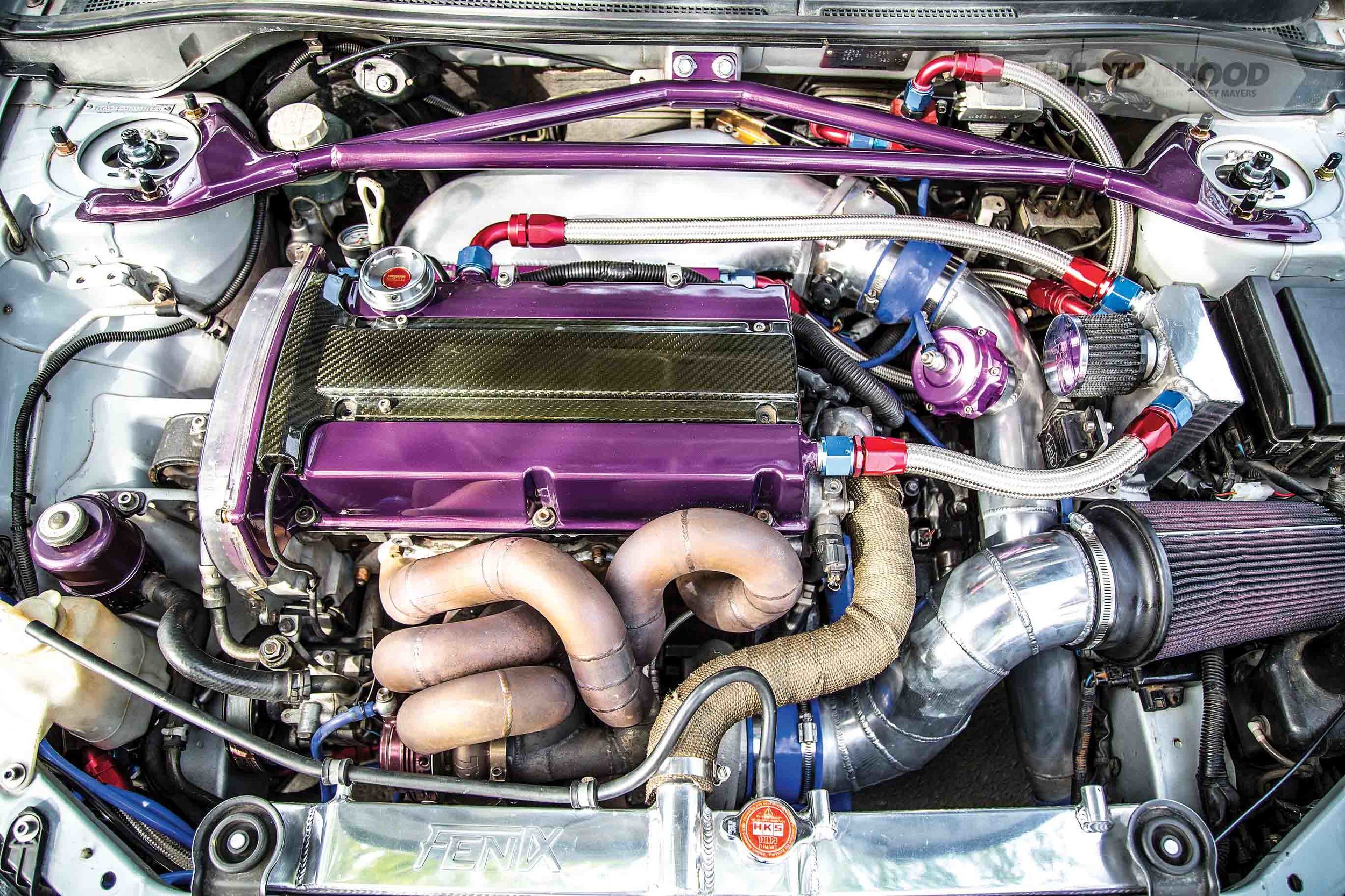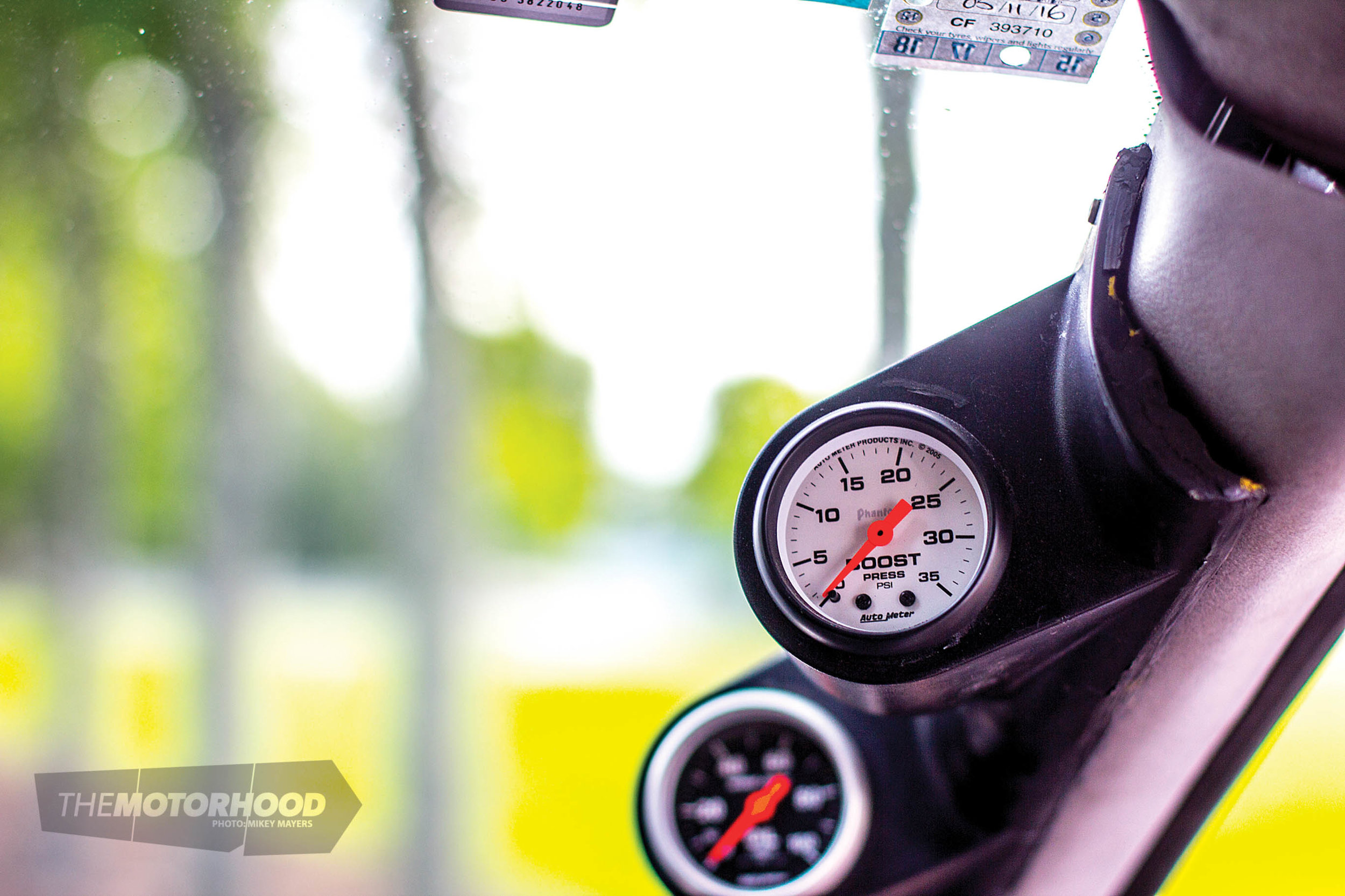data-animation-override>
“When building a tough Evo for the street, few delve the depths of insanity that Peter Kearney excavated with his 527-kilowatt Evo VII”

There are few emotions we car guys feel more strongly than those flooding our brain when we find that next perfect project. Scouring Trade Me’s deepest, darkest orifices on the hunt for the right vehicle can be daunting and result in mixed feelings, and it was a combination of relief and excitement that Peter Kearney felt when he finally found the Evo he was longing for.
After modifying an early model Subaru WRX and then a Toyota Supra, Peter knew for certain that the late-model Evolution platform was where his loyalties would soon lie. He’d seen them dominate local streets for years and witnessed first-hand the power and potential they possessed.

His search took him as far north as Fast 4s and Turbos, based just down the road from NZPC Towers in Auckland. Plane tickets were booked, the lads were rallied, and Peter’s new 2001 Mitsubishi Evo VII was acquired after a few notes were handed over. Thankfully for him, this was no factory example, but, rather, a 298kW (400hp) forged-bottom-end streeter with more potential than he originally realized. The usually tedious drive back south cemented his bond with the car, along with a few plans.

Months of navigating Christchurch roads and highways and waiting at traffic lights on the daily commute proved the new package was seamless. The engine was a solid one that had proved its might and only required general and preventative maintenance to keep it running smoothly — that is, until it was given to an under-qualified, over-enthusiastic ‘friend’ for a service.
“I got a phone call from my friend, who was giving the Evo a service for me. He phoned me to tell me that, after he’d completed the service, the engine had destroyed itself,” Peter said. Not one to cause a major fuss, he had a good friend tow the car to the nearest Evo workshop, Evo Parts, for a complete strip down and inspection.
What was instantly evident was that the service hadn’t been completed, as the oil was still black — and, to top things off, it was easily obvious that the engine had been well over-revved and abused, causing severe head damage. Moving forward, a plan was hatched that involved Jeremy Beaton from Evo Parts rebuilding the 4g63 using a highly ported and polished head with extremely aggressive cams — Peter was sick of mucking around and was keen to make some serious grunt.

An initial budget was set, though it more than doubled over the course of the build. HKS 280-degree cams were installed, and oversized valves and titanium retainers were fitted: the new engine was complete for now. Peter decided to do away with the large-frame TD06 Kinugawa turbo, as Rapid Performance suggested a much larger Holset would give the response and power levels he was hunting down. A Holset Super HX40 was forged in the depths of Steve Murch’s lair then flown down to Christchurch to be mounted to the new Race Fab turbo manifold. This set-up proved potent on its first outing to the dyno: on 29psi and at 8000rpm, the Evo produced 453kW (607hp) at the flywheel, but this was just scratching at the surface of the 4G63’s potential.
“With an extra 1000rpm and three more pounds of boost, we produced another 75kW. It was now producing 527kW [707hp] at the flywheel, with much more in it,” Peter explained. Reuben York of Rapid Performance didn’t push it further though, as the already upgraded ignition couldn’t provide the added spark required. Then, with over 500kW and a rebuilt head, Peter was struck with extremely bad luck once again — but, this time, it was the bottom end. “The crankshaft decided to give up the ghost at this power level, but, considering it had been running for several years, it wasn’t a bad effort,” Peter told us, still in good spirits.

Much beefier ignition coils were then fitted, along with a Manley billet Turbo Tuff knife-edged crank, a set of Manley Turbo Tuff I-beam con rods, and CP 10.5:1 forged pistons, which would give the 4G63 a bump in compression, something that tuners don’t shy away from in this day and age, though that meant E85 was most definitely on the cards to minimize knock. The fuel system was also upgraded, with a trio of fuel pumps and 2000cc injectors installed to handle the specially imported ethanol blend. As added insurance, Peter also had an Accusump fitted, in case of surge issues in future.

You’d think 527kW would be enough power to extract from the 2.0-litre, but Reuben predicts that, with 10,000rpm and 35psi of boost, the 4G63 will safely put out just over 671kW (900hp) at the flywheel. “People are amazed the factory gearbox is still holding on, but my current trick is using cheaper road tyres, so it breaks traction instead of breaking gears. It’s working well, for now,” Peter told us, laughing. That said, he does plan to install a much gnarlier gear set before the wick is wound up even further, as semi-slick tyres will be essential to keep it on the tarmac.

With all that power, you might be forgiven for thinking Peter’s Evo has been built only to go fast, but this couldn’t be further from the truth. He’s taken a ‘do it once, do it right’ attitude to the build, and it shows throughout. Peter managed to take out Best Mitsubishi and Best [year] 2000+ four-cylinder at the 2015 V 4&Rotary South Island Champs. It nearly took out the People’s Choice award too, missing out by one vote. It just goes to show, the Evo is still a cult classic even in an aesthetically simple form. Mitsubishi really did produce something special from the factory, something that Peter has had a blast modifying ever since he got his hands on one.

Mitsubishi Lancer Evolution VII
Engine
- Model: 4G63T, 2000cc, four cylinder
- Block: Manley billet Turbo Tuff knife-edged crank, Manley Turbo Tuff I-beam con rods, CP 10.5:1 forged pistons, Cosworth bearings, Cosworth head gasket, A1 Technologies head studs
- Head: Ported head by Car Aid, 1mm oversized Supertech valves, Kelford 280-degree cams, Pacaloy valve springs, titanium retainers, HKS cam gears, HKS cam belt
- Intake: Racefab custom intake manifold, Accufab 80mm throttle body, K&N 12-inch-long air filter with four-inch inlet
- Turbo: Holset HX40 (18cm rear housing, 16.5cm billet compressor wheel), custom Racefab twin-scroll turbo manifold
- Wastegate: TiAL 44mm
- BOV: TiAL 50mm
- Fuel: Aeromotive belt-drive fuel pump, EFI regulator, 2000cc injectors, Walbro lift pump, custom Racefab surge tank, twin Bosch 044 fuel pumps, SRP fittings, -10 braided fuel lines
- Ignition: NZEFI coilpacks, custom leads, NGK iridium spark plugs
- Exhaust: 3.5-inch mild-steel exhaust system with muffler, two-inch wastegate screamer pipe with muffler
- Cooling: Fenix radiator, Ralliart thermostat
- ECU: Link G4 Storm
- Other: Turbosmart e-Boost controller, HKS turbo timer, semi deloomed engine bay, custom catch can, ATI super damper, custom purple rocker cover
Driveline
- Gearbox: Factory five-speed gearbox
- Clutch: Tilton triple-plate
- Flywheel: Tilton flywheel
- Diff: Evo Parts custom RS LSD
- Other: Evo RS axles
Support
- Struts: Neo Max R coilovers
- Brakes: Factory Brembos, EBC race pads
Shoes
- Wheels: 18×8.5-inch Wolf S1P
- Tyres: 225/40R18 Linglong
Exterior
- Paint: Resprayed factory A69 silver
- Enhancements: 35-per-cent tints
Interior
- Seats: Factory Recaro
- Steering wheel: Factory Momo
- Instrumentation: Autometer boost gauge and oil pressure gauge
- Other: Panasonic head unit
Performance
- Power: 527kW (707hp) at the wheels
Driver profile
- Driver/owner: Peter Kearney
- Age: 23
- Location: Christchurch
- Build time: One year
- Length of ownership: Three years
- Thanks: Corey at Japanese Race Supplies, Jeremy and Rob at Evo Parts, Brian at Harewood Panel and Paint, Reuben and Chris at Rapid Performance, Grant at Silvester V8 Performance, and a huge thanks to Jeremy, Brian, Corey and Reuben for all the late nights and long weekends getting the car done
This article was originally featured in NZ Performance Car Issue No. 231. You can pick up a print copy or digital copy of the magazine below:






